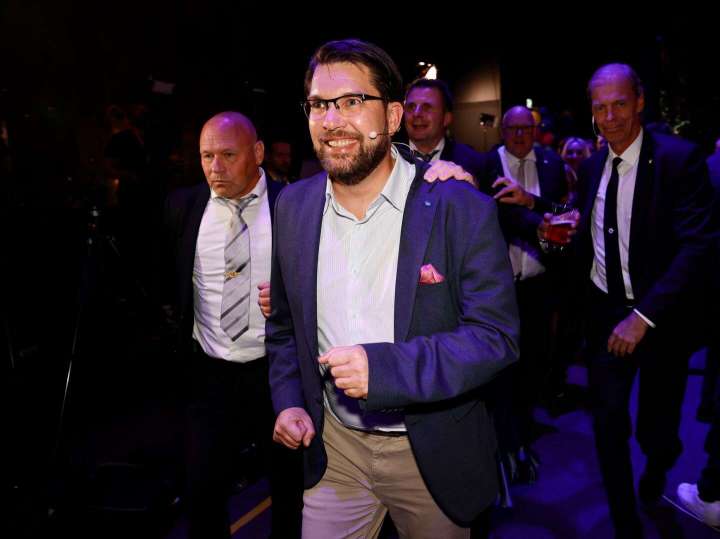A center-right coalition in Sweden narrowly secured victory on Wednesday, anchored by a national populist party called the Sweden Democrats. This has unnerved many in the West, but it shouldn’t. It’s simply yet another example of how the refusal of elites to deal with the legitimate concerns of voters is fueling populist backlash.
Sweden’s populists have surged to power. Elites have only themselves to blame.

National populism, a term coined by British political scientists Roger Eatwell and Matthew Goodwin, is today found in virtually every Western nation. Its adherents tend to come from similar social classes — disproportionally middle-aged workers without high levels of formal education. They tilt male but include large numbers of demographically similar women. They swing to the left on economics, supporting strong welfare states, and to the right on culture. They are fearful of social and economic change that affects their standard of living and social status, and they organize to resist that change.
Immigration and crime are especially powerful issues with these voters, and sure enough that proved true in Sweden. The country took in more asylum seekers per capita than any other country in the European Union during the mid-2010s migrant crisis, and many of those came from Muslim-majority nations with very different cultures from Sweden’s. The decision to allow in so many refugees destroyed the government led by Prime Minister Fredrik Reinfeldt of the Moderate Party in 2014. Governments since, led by Sweden’s Social Democratic Party, have failed to control the ramifications of this surge of immigration, resulting in the toppling this week of Prime Minister Magdalena Andersson.
Crime has also become a real issue in Sweden. The nation has some of the highest homicide and gun violence rates in Europe. Swedish journalist Paulina Neuding has chronicled this sea change for many years, mostly caused by drug gangs. And as she has written, it’s impossible to ignore the political toxic reality that this violence is dominated by first- or second-generation immigrants, as the Swedish newspaper Dagens Nyheter reported in 2017. Making things worse, a far-right provocateur has been burning Qurans in immigrant communities, resulting in rioting in April.
Follow Henry Olsen‘s opinions
FollowPerhaps the most shocking development has been the dramatic increase in gang-related hand-grenade bombings. Since 2018, there have been nearly 500 such attacks. The United States, with a population about 30 times larger than Sweden’s, reported 251 bombings in 2019, virtually none from hand grenades.
Whatever your views on immigration and the causes of crime, no one should be surprised that major changes such as these have an impact at the polls. Indeed, Sweden’s election returns show a divide between urban, educated regions and small-town rural areas similar to that seen in the United States and elsewhere.
The four center-left parties combined to gain vote share in Sweden’s four largest cities and their suburbs, compared with Sweden’s 2018 election. Their collective gains ranged from 4.6 percentage points in the capital of Stockholm to about half a percentage point in Uppsala County, just north of Stockholm. Together, these areas cast a bit more than a third of the total votes.
But while urban, prosperous Sweden didn’t want to change, the rest of the country certainly did.
Norrbotten County is a perfect example. This far-northern province is a historic bastion of the left, dominated by working-class miners. Social Democrats and the former Communist Left Party typically took close to 70 percent of the vote there in the mid-1990s. In 2018, these parties plus the center-left Greens won 62 percent. This year, however, the left parties won only 57.5 percent of the county, and the Sweden Democrats soared to more than 20 percent.
This shift among working-class voters occurred nationwide, overwhelming the left despite its gains in the cities and suburbs. Exit polls show that the Sweden Democrats received almost as many working-class votes as the Social Democrats, the traditional Swedish working-class party. Just as in Britain and the United States, economic stagnation and cultural issues are causing the working class to move to the populist right.
This fact cannot be ignored by any party that wants to govern Sweden — and by extension many other Western countries. Establishment center-left and center-right parties have tried demonizing or excluding national populists from power for years. Nothing has dented their rise. National populism will stop growing only when the concerns of its supporters are seriously addressed.
It is important to note the understandable concerns that the Sweden Democrats are anti-democratic, but the truth is these are largely overblown. The party has grown massively since the days when it was a tiny fringe dominated by neo-Nazis — two decades ago. Leader Jimmie Akesson says he has purged the party of its racist and fascist elements, and most Sweden Democrat supporters today are frustrated people who want change. Their challenge is to prove to the rest of Sweden that their party has moved on from its ugly history.
Sweden’s election is just the latest of a decade-long series of wake-up calls for Western elites. Most keep hitting the snooze button hoping the national populist challenge goes away. Time to wake up and face the music or get swept away by an angry rising tide.






